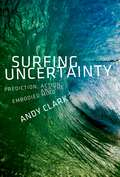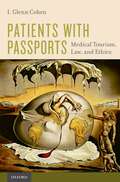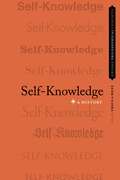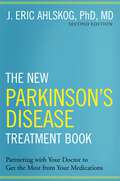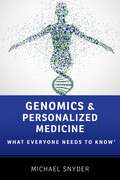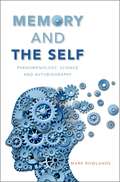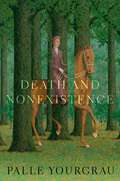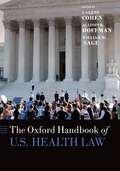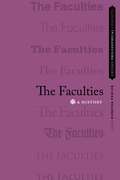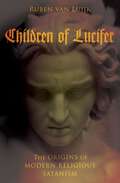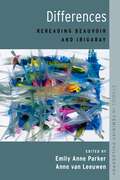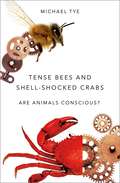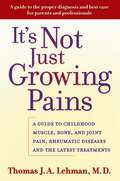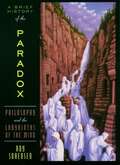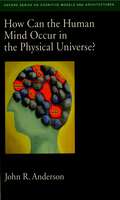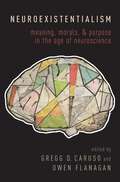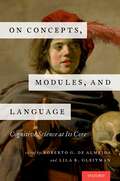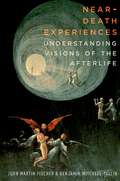- Table View
- List View
Surfing Uncertainty: Prediction, Action, and the Embodied Mind
by Andy ClarkHow is it that thoroughly physical material beings such as ourselves can think, dream, feel, create and understand ideas, theories and concepts? How does mere matter give rise to all these non-material mental states, including consciousness itself? An answer to this central question of our existence is emerging at the busy intersection of neuroscience, psychology, artificial intelligence, and robotics. In this groundbreaking work, philosopher and cognitive scientist Andy Clark explores exciting new theories from these fields that reveal minds like ours to be prediction machines - devices that have evolved to anticipate the incoming streams of sensory stimulation before they arrive. These predictions then initiate actions that structure our worlds and alter the very things we need to engage and predict. Clark takes us on a journey in discovering the circular causal flows and the self-structuring of the environment that define "the predictive brain." What emerges is a bold, new, cutting-edge vision that reveals the brain as our driving force in the daily surf through the waves of sensory stimulation.
Surfing Uncertainty: Prediction, Action, and the Embodied Mind
by Andy ClarkHow is it that thoroughly physical material beings such as ourselves can think, dream, feel, create and understand ideas, theories and concepts? How does mere matter give rise to all these non-material mental states, including consciousness itself? An answer to this central question of our existence is emerging at the busy intersection of neuroscience, psychology, artificial intelligence, and robotics. In this groundbreaking work, philosopher and cognitive scientist Andy Clark explores exciting new theories from these fields that reveal minds like ours to be prediction machines - devices that have evolved to anticipate the incoming streams of sensory stimulation before they arrive. These predictions then initiate actions that structure our worlds and alter the very things we need to engage and predict. Clark takes us on a journey in discovering the circular causal flows and the self-structuring of the environment that define "the predictive brain." What emerges is a bold, new, cutting-edge vision that reveals the brain as our driving force in the daily surf through the waves of sensory stimulation.
Patients with Passports: Medical Tourism, Law, and Ethics
by I. Glenn CohenCan your employer require you to travel to India for a hip replacement as a condition of insurance coverage? If injury results, can you sue the doctor, hospital or insurer for medical malpractice in the country where you live? Can a country prohibit its citizens from helping a relative travel to Switzerland for assisted suicide? What about travel for abortion? In Patients with Passports, I. Glenn Cohen tackles these important questions, and provides the first comprehensive legal and ethical analysis of medical tourism. Medical tourism is a growing multi-billion dollar industry involving millions of patients who travel abroad each year to get health care. Some seek legitimate services like hip replacements and travel to avoid queues, save money, or because their insurer has given them an incentive to do so. Others seek to circumvent prohibitions on accessing services at home and go abroad to receive abortions, assisted suicide, commercial surrogacy, or experimental stem cell treatments. In this book, author I. Glenn Cohen focuses on patients traveling for cardiac bypass and other legal services to places like India, Thailand, and Mexico, and analyzes issues of quality of care, disease transmission, liability, private and public health insurance, and the effects of this trade on foreign health care systems. He goes on to examine medical tourism for services illegal in the patient's home country, such as organ purchase, abortion, assisted suicide, fertility services, and experimental stem cell treatments. Here, Cohen examines issues such as extraterritorial criminalization, exploitation, immigration, and the protection of children. Through compelling narratives, expert data, and industry explanations Patients with Passports enables the reader to connect with the most prevalent legal and ethical issues facing medical tourism today.
Self-Knowledge: A History (Oxford Philosophical Concepts)
The acquisition of self-knowledge is often described as one of the main goals of philosophical inquiry. At the same time, some sort of self-knowledge is often regarded as a necessary condition of our being a human agent or human subject. Thus self-knowledge is taken to constitute both the beginning and the end of humans' search for wisdom, and as such it is intricately bound up with the very idea of philosophy. Not surprisingly therefore, the Delphic injunction 'Know thyself' has fascinated philosophers of different times, backgrounds, and tempers. But how can we make sense of this imperative? What is self-knowledge and how is it achieved? What are the structural features that distinguish self-knowledge from other types of knowledge? What role do external, second- and third-personal, sources of knowledge play in the acquisition of self-knowledge? How can we account for the moral impact ascribed to self-knowledge? Is it just a form of anthropological knowledge that allows agents to act in accordance with their aims? Or, does self-knowledge ultimately ennoble the self of the subjects having it? Finally, is self-knowledge, or its completion, a goal that may be reached at all? The book addresses these questions in fifteen chapters covering approaches of many philosophers from Plato and Aristotle to Edmund Husserl or Elisabeth Anscombe. The short reflections inserted between the chapters show that the search for self-knowledge is an important theme in literature, poetry, painting and self-portraiture from Homer.
The New Parkinson's Disease Treatment Book: Partnering with Your Doctor To Get the Most from Your Medications
by J. Eric Ahlskog, PhD, MDThe fundamental guide to the most effective treatments for Parkinson's Disease, from a Mayo Clinic doctor with thirty years of clinical and research experience. In this second edition follow-up to the extremely successful first edition, Dr. Ahlskog draws on thirty years of clinical experience to present the definitive guide to dealing with all aspects of Parkinson's Disease, from treatment options and side effects to the impact of the disease on caregivers and family. Dr. Ahlskog's goal is to educate patients so that they can better team up with their doctors to do battle with the disease, streamlining the decision-making process and enhancing their treatment. To do this, Dr. Ahlskog offers a gold mine of information, distilled from his years of experience treating people with Parkinson's at the Mayo Clinic. In addition to providing a comprehensive account of Parkinson's medications, this book also examines additional aspects of treatment, such as the role of nutrition, exercise, and physical therapy. Although many commendable texts have been written on the subject of Parkinson's Disease, their discussions of treatment have not been in depth. Dr. Ahlskog sifts through aspects of the disease in order to give the reader a comprehensive sense of Parkinson's and the best available treatment options. With a broader understanding of the disease and the available options, patients are able to make more informed choices, and doctors are able to provide more tailored care. This book delivers hopeful, helpful, and extensive information to all parties concerned: patients, caregivers, and doctors. The ultimate guide to symptoms and treatment, this thoroughly updated second edition is the first place patients should turn for reliable, easy-to-grasp information on Parkinson's Disease.
The New Parkinson's Disease Treatment Book: Partnering with Your Doctor To Get the Most from Your Medications
by J. Eric Ahlskog, PhD, MDThe fundamental guide to the most effective treatments for Parkinson's Disease, from a Mayo Clinic doctor with thirty years of clinical and research experience. In this second edition follow-up to the extremely successful first edition, Dr. Ahlskog draws on thirty years of clinical experience to present the definitive guide to dealing with all aspects of Parkinson's Disease, from treatment options and side effects to the impact of the disease on caregivers and family. Dr. Ahlskog's goal is to educate patients so that they can better team up with their doctors to do battle with the disease, streamlining the decision-making process and enhancing their treatment. To do this, Dr. Ahlskog offers a gold mine of information, distilled from his years of experience treating people with Parkinson's at the Mayo Clinic. In addition to providing a comprehensive account of Parkinson's medications, this book also examines additional aspects of treatment, such as the role of nutrition, exercise, and physical therapy. Although many commendable texts have been written on the subject of Parkinson's Disease, their discussions of treatment have not been in depth. Dr. Ahlskog sifts through aspects of the disease in order to give the reader a comprehensive sense of Parkinson's and the best available treatment options. With a broader understanding of the disease and the available options, patients are able to make more informed choices, and doctors are able to provide more tailored care. This book delivers hopeful, helpful, and extensive information to all parties concerned: patients, caregivers, and doctors. The ultimate guide to symptoms and treatment, this thoroughly updated second edition is the first place patients should turn for reliable, easy-to-grasp information on Parkinson's Disease.
Genomics and Personalized Medicine: What Everyone Needs to Know® (What Everyone Needs To Know®)
by Michael SnyderIn 2001 the Human Genome Project succeeded in mapping the DNA of humans. This landmark accomplishment launched the field of genomics, the integrated study of all the genes in the human body and the related biomedical interventions that can be tailored to benefit a person's health. Today genomics, part of a larger movement toward personalized medicine, is poised to revolutionize health care. By cross-referencing an individual's genetic sequence -- their genome -- against known elements of "Big Data," elements of genomics are already being incorporated on a widespread basis, including prenatal disease screening and targeted cancer treatments. With more innovations soon to arrive at the bedside, the promise of the genomics revolution is limitless. This entry in the What Everyone Needs to Know series offers an authoritative resource on the prospects and realities of genomics and personalized medicine. As this science continues to alter traditional medical paradigms, consumers are faced with additional options and more complicated decisions regarding their health care. This book provides the essential information everyone needs.
Genomics and Personalized Medicine: What Everyone Needs to Know® (What Everyone Needs To Know®)
by Michael SnyderIn 2001 the Human Genome Project succeeded in mapping the DNA of humans. This landmark accomplishment launched the field of genomics, the integrated study of all the genes in the human body and the related biomedical interventions that can be tailored to benefit a person's health. Today genomics, part of a larger movement toward personalized medicine, is poised to revolutionize health care. By cross-referencing an individual's genetic sequence -- their genome -- against known elements of "Big Data," elements of genomics are already being incorporated on a widespread basis, including prenatal disease screening and targeted cancer treatments. With more innovations soon to arrive at the bedside, the promise of the genomics revolution is limitless. This entry in the What Everyone Needs to Know series offers an authoritative resource on the prospects and realities of genomics and personalized medicine. As this science continues to alter traditional medical paradigms, consumers are faced with additional options and more complicated decisions regarding their health care. This book provides the essential information everyone needs.
Memory and the Self: Phenomenology, Science and Autobiography
by Mark RowlandsThe idea that our memories, in some sense, make us who we are, is a common one-and not at all implausible. After all, what could make us who we are if not the things we have experienced, thought, felt and desired on these idiosyncratic pathways through space and time that we call lives? And how can we retain these experiences, thoughts, feelings and desires if not through memory? On the other hand, most of what we have experienced has been forgotten. And there is now a considerable body of evidence that suggests that, even when we think we remember, our memories are likely to be distorted, sometimes beyond recognition. Imagine writing your autobiography, only to find that that most of it has been redacted, and much of the rest substantially rewritten. What would hold this book together? What would make it the unified and coherent account of a life? The answer, Mark Rowlands argues, lies, partially hidden, in a largely unrecognized form of memory-Rilkean memory. A Rilkean memory is produced when the content of a memory is lost but the act of remembering endures, in a new, mutated, form: a mood, a feeling, or a behavioral disposition. Rilkean memories play a significant role in holding the self together in the face of the poverty and inaccuracy of the contents of memory. But Rilkean memories are important not just because of what they are, but also because of what they were before they became such memories. Acts of remembering sculpt the contents of memories out of the slabs of remembered episodes. Our acts of remembering ensure that we are in the content of each of our memories-present in the way a sculptor is present in his creation-even when this content is lamentably sparse and endemically inaccurate.
Death and Nonexistence
by Palle YourgrauThe dead are gone. They count for nothing. Yet, if we count the dead, their number is staggering. And they account for most of what is great about civilization. Compared to the greatness of the dead, the accomplishments of the living are paltry. Which is it then: are the dead still there to be counted or not? And if they are still there, where exactly is "there"? We are confronted with the ancient paradox of nonexistence bequeathed us by Parmenides. The mystery of death is the mystery of nonexistence. A successful attempt to provide a metaphysics of death, then, must resolve the paradox of nonexistence. That is the aim of this study. At the same time, the metaphysics of death, of ceasing to exist, must serve as an account of birth, of coming to exist; the primary thesis of this book is that this demands going beyond existence and nonexistence to include what underlies both, which one can call, following tradition, "being." The dead and the unborn are therefore objects that lack existence but not being. Nonexistent objects - not corpses, or skeletons, or memories, all of which are existent objects - are what are "there" to be counted when we count the dead.
The Oxford Handbook of U.S. Health Law (Oxford Handbooks)
by I. Glenn Cohen, Allison K. Hoffman, William M. SageThe Oxford Handbook of U.S. Health Law covers the breadth and depth of health law, with contributions from the most eminent scholars in the field. The Handbook paints with broad thematic strokes the major features of American healthcare law and policy, its recent reforms including the Affordable Care Act, its relationship to medical ethics and constitutional principles, and how it compares to the experience of other countries. It explores the legal framework for the patient experience, from access through treatment, to recourse (if treatment fails), and examines emerging issues involving healthcare information, the changing nature of healthcare regulation, immigration, globalization, aging, and the social determinants of health. This Handbook provides valuable content, accessible to readers new to the subject, as well as to those who write, teach, practice, or make policy in health law.
The Faculties: A History (Oxford Philosophical Concepts)
by Dominik PerlerIt seems quite natural to explain the activities of human and non-human animals by referring to their special faculties. Thus, we say that dogs can smell things in their environment because they have perceptual faculties, or that human beings can think because they have rational faculties. But what are faculties? In what sense are they responsible for a wide range of activities? How can they be individuated? How are they interrelated? And why are different types of faculties assigned to different types of living beings? The six chapters in this book discuss these questions, covering a wide period from Plato up to contemporary debates about faculties as modules of the mind. They show that faculties were referred to in different theoretical contexts, but analyzed in radically different ways. Some philosophers, especially Aristotelians, made them the cornerstone of their biological and psychological theories, taking them to be basic powers of living beings. Others took them to be inner causes that literally produce activities, while still others provided a purely functional explanation. The chapters focus on various models, taking into account Greek, Arabic, Latin, French, German and Anglo-American debates. They analyze the role assigned to faculties in metaphysics, philosophy of mind and epistemology, but also the attack that was often launched against the assumption that faculties are hidden yet real features of living beings. The short "Reflections" inserted between the chapters make clear that faculties were also widely discussed in literature, science and medicine.
Children of Lucifer: The Origins of Modern Religious Satanism (Oxford Studies in Western Esotericism)
by Ruben van LuijkIf we are to believe sensationalist media coverage, Satanism is, at its most benign, the purview of people who dress in black, adorn themselves with skull and pentagram paraphernalia, and listen to heavy metal. At its most sinister, its adherents are worshippers of evil incarnate and engage in violent and perverse secret rituals, the details of which mainstream society imagines with a fascination verging on the obscene. Children of Lucifer debunks these facile characterizations by exploring the historical origins of modern Satanism. Ruben van Luijk traces the movement's development from a concept invented by a Christian church eager to demonize its internal and external competitors to a positive (anti-)religious identity embraced by various groups in the modern West. Van Luijk offers a comprehensive intellectual history of this long and unpredictable trajectory. This story involves Romantic poets, radical anarchists, eccentric esotericists, Decadent writers, and schismatic exorcists, among others, and culminates in the establishment of the Church of Satan by carnival entertainer Anton Szandor LaVey. Yet it is more than a collection of colorful characters and unlikely historical episodes. The emergence of new attitudes toward Satan proves to be intimately linked to the ideological struggle for emancipation that transformed the West and is epitomized by the American and French Revolutions. It is also closely connected to secularization, that other exceptional historical process which saw Western culture spontaneously renounce its traditional gods and enter into a self-imposed state of religious indecision. Children of Lucifer makes the case that the emergence of Satanism presents a shadow history of the evolution of modern civilization as we know it. Offering the most comprehensive account of this history yet written, van Luijk proves that, in the case of Satanism, the facts are much more interesting than the fiction.
Children of Lucifer: The Origins of Modern Religious Satanism (Oxford Studies in Western Esotericism)
by Ruben van LuijkIf we are to believe sensationalist media coverage, Satanism is, at its most benign, the purview of people who dress in black, adorn themselves with skull and pentagram paraphernalia, and listen to heavy metal. At its most sinister, its adherents are worshippers of evil incarnate and engage in violent and perverse secret rituals, the details of which mainstream society imagines with a fascination verging on the obscene. Children of Lucifer debunks these facile characterizations by exploring the historical origins of modern Satanism. Ruben van Luijk traces the movement's development from a concept invented by a Christian church eager to demonize its internal and external competitors to a positive (anti-)religious identity embraced by various groups in the modern West. Van Luijk offers a comprehensive intellectual history of this long and unpredictable trajectory. This story involves Romantic poets, radical anarchists, eccentric esotericists, Decadent writers, and schismatic exorcists, among others, and culminates in the establishment of the Church of Satan by carnival entertainer Anton Szandor LaVey. Yet it is more than a collection of colorful characters and unlikely historical episodes. The emergence of new attitudes toward Satan proves to be intimately linked to the ideological struggle for emancipation that transformed the West and is epitomized by the American and French Revolutions. It is also closely connected to secularization, that other exceptional historical process which saw Western culture spontaneously renounce its traditional gods and enter into a self-imposed state of religious indecision. Children of Lucifer makes the case that the emergence of Satanism presents a shadow history of the evolution of modern civilization as we know it. Offering the most comprehensive account of this history yet written, van Luijk proves that, in the case of Satanism, the facts are much more interesting than the fiction.
Differences: Rereading Beauvoir and Irigaray (Studies in Feminist Philosophy)
Simone de Beauvoir and Luce Irigaray famously insisted on their philosophical differences, and this mutual insistence has largely guided the reception of their thought. What does it mean to return to Simone de Beauvoir and Luce Irigaray in light of questions and problems of contemporary feminism, including intersectional and queer criticisms of their projects? How should we now take up, amplify, and surpass the horizons opened by their projects? Seeking answers to these questions, the essays in this volume return to Beauvoir and Irigaray to find what the two philosophers share. And as the authors make clear, the richness of Beauvoir and Irigaray's thought far exceeds the reductive parameters of the Eurocentric, bourgeois second-wave debates that have constrained interpretation of their work. The first section of this volume places Beauvoir and Irigaray in critical dialogue, exploring the place of the material and the corporeal in Beauvoir's thought and, in doing so, reading Beauvoir in a framework that goes beyond a theory of gender and the humanism of phenomenology. The essays in the second section of the volume take up the challenge of articulating points of dialogue between the two focal philosophers in logic, ethics, and politics. Combined, these essays resituate Beauvoir and Irigaray's work both historically and in light of contemporary demands, breaking new ground in feminist philosophy.
Vaccines: What Everyone Needs to Know® (What Everyone Needs To Know®)
by Kristen A. FeemsterImmunization is regarded by many as one of the greatest advances in modern civilization. The widespread use of vaccines has led to increases in life expectancy, reductions in the occurrence of childhood diseases, and is generally credited with saving millions of lives annually. But since their discovery two centuries ago, vaccines have been dogged by pockets of persistent distrust among those who are skeptical of their science or who find compulsory immunization at odds with personal liberty. The rise of these voices in contemporary culture has contributed to trends of vaccine delay and vaccine hesitancy in some communities -- a chasm between the general population and the scientific establishment that has persisted and grown at times across the last several decades. Vaccines: What Everyone Needs to Know® offers a scientifically grounded overview of the science, manufacture, and culture of vaccines in the United States and internationally. Aiming to offer an unbiased resource on this hotly debated subject, it provides accessible, authoritative overviews of the following: · How vaccines work · The history of vaccines · Vaccine policy -- who writes it, and does it matter? · The contents and manufacture of vaccines · Vaccine injury · The alleged link between vaccines and autism · Vaccines and new outbreaks Written by a leading authority in both infectious disease and vaccine education, this book offers a clear-eyed resource for parents or anyone with an interest in the use, efficacy, and controversy surrounding vaccines. In a subject area defined by partisanship, it offers reliable resource for what everyone needs to know.
VACCINES WENK C: What Everyone Needs to Know® (What Everyone Needs To Know®)
by Kristen A. FeemsterImmunization is regarded by many as one of the greatest advances in modern civilization. The widespread use of vaccines has led to increases in life expectancy, reductions in the occurrence of childhood diseases, and is generally credited with saving millions of lives annually. But since their discovery two centuries ago, vaccines have been dogged by pockets of persistent distrust among those who are skeptical of their science or who find compulsory immunization at odds with personal liberty. The rise of these voices in contemporary culture has contributed to trends of vaccine delay and vaccine hesitancy in some communities -- a chasm between the general population and the scientific establishment that has persisted and grown at times across the last several decades. Vaccines: What Everyone Needs to Know® offers a scientifically grounded overview of the science, manufacture, and culture of vaccines in the United States and internationally. Aiming to offer an unbiased resource on this hotly debated subject, it provides accessible, authoritative overviews of the following: · How vaccines work · The history of vaccines · Vaccine policy -- who writes it, and does it matter? · The contents and manufacture of vaccines · Vaccine injury · The alleged link between vaccines and autism · Vaccines and new outbreaks Written by a leading authority in both infectious disease and vaccine education, this book offers a clear-eyed resource for parents or anyone with an interest in the use, efficacy, and controversy surrounding vaccines. In a subject area defined by partisanship, it offers reliable resource for what everyone needs to know.
Tense Bees and Shell-Shocked Crabs: Are Animals Conscious?
by Michael TyeA consideration of some of the most common questions about animal minds. Do birds have feelings? Can fish feel pain? Could a honeybee be anxious? For centuries, the question of whether or not animals are conscious like humans has prompted debates among philosophers and scientists. While most people gladly accept that complex mammals - such as dogs - share emotions and experiences with us, the matter of simpler creatures is much less clear. Meanwhile, the advent of the digital age and artificial intelligence has created an added dimension to questions about non-human consciousness. In Tense Bees and Shell-Shocked Crabs, Michael Tye offers answers to some of today's most pressing questions about nonhuman consciousness. Blending the latest research about animal sensation with theories about the nature of consciousness, Tye develops a methodology for addressing the mysteries of the animal mind. Without endorsing any specific theory on the nature of consciousness, Tye tackles issues such as the animal experience of pain and fear, and the role of brain anatomy in determining consciousness. He then turns his attention to the artificial realm, considering whether complex robots could ever be considered conscious. Tye concludes with a discussion of how, if we consider animals conscious, this might impact our ethical obligations to them. From insects to crabs, fish to birds, Tense Bees and Shell-Shocked Crabs offers an insightful exploration of the ways in which animals relate to the world. Tense Bees and Shell-Shocked Crabs will appeal to students and scholars of philosophy and neuroscience, as well as general readers with an interest in animal and environmental ethics.
Tense Bees and Shell-Shocked Crabs: Are Animals Conscious?
by Michael TyeA consideration of some of the most common questions about animal minds. Do birds have feelings? Can fish feel pain? Could a honeybee be anxious? For centuries, the question of whether or not animals are conscious like humans has prompted debates among philosophers and scientists. While most people gladly accept that complex mammals - such as dogs - share emotions and experiences with us, the matter of simpler creatures is much less clear. Meanwhile, the advent of the digital age and artificial intelligence has created an added dimension to questions about non-human consciousness. In Tense Bees and Shell-Shocked Crabs, Michael Tye offers answers to some of today's most pressing questions about nonhuman consciousness. Blending the latest research about animal sensation with theories about the nature of consciousness, Tye develops a methodology for addressing the mysteries of the animal mind. Without endorsing any specific theory on the nature of consciousness, Tye tackles issues such as the animal experience of pain and fear, and the role of brain anatomy in determining consciousness. He then turns his attention to the artificial realm, considering whether complex robots could ever be considered conscious. Tye concludes with a discussion of how, if we consider animals conscious, this might impact our ethical obligations to them. From insects to crabs, fish to birds, Tense Bees and Shell-Shocked Crabs offers an insightful exploration of the ways in which animals relate to the world. Tense Bees and Shell-Shocked Crabs will appeal to students and scholars of philosophy and neuroscience, as well as general readers with an interest in animal and environmental ethics.
It's Not Just Growing Pains: A Guide to Childhood Muscle, Bone, and Joint Pain, Rheumatic Diseases, and the Latest Treatments
by Thomas J. LehmanArthritis is usually considered a disease of older adults, but nearly 300,000 children in the United States suffer from some form of arthritis or rheumatic disease, such as juvenile arthritis (JRA), fibromyalgia, chronic fatigue, systemic lupus erythematosus, scleroderma, or Kawasaki disease. Yet until now very little information has been available to guide parents and doctors in properly diagnosing such children. Here is a readable, reliable guide to the common causes of bone, joint, muscle, and arthritis pain in children, designed to help parents and physicians understand these disorders, arrive at the proper diagnosis, and choose the most effective treatment. In this comprehensive resource, Dr. Thomas Lehman--the head of one of the most prestigious pediatric rheumatology programs in the world--offers easy-to-understand information on the causes, symptoms, tests, and treatments for a wide variety of rheumatic diseases and childhood pain. Dr. Lehman writes with great clarity, providing numerous case examples that illustrate the topic at hand and offering practical, down-to-earth advice. Equally important, he answers the questions that parents are most likely to ask: What should they observe in their children? What questions should they ask their doctor? Which tests are necessary? What risk factors should they be aware of? And how can they help their children cope with the social and psychological aspects of their illness. The book summarizes diagnostic tests, discusses the most effective medications, and discusses physical therapy, alternative therapy, and surgical options that are available. Clearly written, thorough, authoritative, and up-to-date, It's Not Just Growing Pains is the definitive resource available on the subject for parents and health care professionals, helping them to understand the children's pain and find the best available care.
A Brief History of the Paradox: Philosophy and the Labyrinths of the Mind
by Roy SorensenCan God create a stone too heavy for him to lift? Can time have a beginning? Which came first, the chicken or the egg? Riddles, paradoxes, conundrums--for millennia the human mind has found such knotty logical problems both perplexing and irresistible. Now Roy Sorensen offers the first narrative history of paradoxes, a fascinating and eye-opening account that extends from the ancient Greeks, through the Middle Ages, the Enlightenment, and into the twentieth century. When Augustine asked what God was doing before He made the world, he was told: "Preparing hell for people who ask questions like that." A Brief History of the Paradox takes a close look at "questions like that" and the philosophers who have asked them, beginning with the folk riddles that inspired Anaximander to erect the first metaphysical system and ending with such thinkers as Lewis Carroll, Ludwig Wittgenstein, and W.V. Quine. Organized chronologically, the book is divided into twenty-four chapters, each of which pairs a philosopher with a major paradox, allowing for extended consideration and putting a human face on the strategies that have been taken toward these puzzles. Readers get to follow the minds of Zeno, Socrates, Aquinas, Ockham, Pascal, Kant, Hegel, and many other major philosophers deep inside the tangles of paradox, looking for, and sometimes finding, a way out. Filled with illuminating anecdotes and vividly written, A Brief History of the Paradox will appeal to anyone who finds trying to answer unanswerable questions a paradoxically pleasant endeavor.
How Can the Human Mind Occur in the Physical Universe? (Oxford Series on Cognitive Models and Architectures #3)
by John R. Anderson"The question for me is how can the human mind occur in the physical universe. We now know that the world is governed by physics. We now understand the way biology nestles comfortably within that. The issue is how will the mind do that as well."--Allen Newell, December 4, 1991, Carnegie Mellon University The argument John Anderson gives in this book was inspired by the passage above, from the last lecture by one of the pioneers of cognitive science. Newell describes what, for him, is the pivotal question of scientific inquiry, and Anderson gives an answer that is emerging from the study of brain and behavior. Humans share the same basic cognitive architecture with all primates, but they have evolved abilities to exercise abstract control over cognition and process more complex relational patterns. The human cognitive architecture consists of a set of largely independent modules associated with different brain regions. In this book, Anderson discusses in detail how these various modules can combine to produce behaviors as varied as driving a car and solving an algebraic equation, but focuses principally on two of the modules: the declarative and procedural. The declarative module involves a memory system that, moment by moment, attempts to give each person the most appropriate possible window into his or her past. The procedural module involves a central system that strives to develop a set of productions that will enable the most adaptive response from any state of the modules. Newell argued that the answer to his question must take the form of a cognitive architecture, and Anderson organizes his answer around the ACT-R architecture, but broadens it by bringing in research from all areas of cognitive science, including how recent work in brain imaging maps onto the cognitive architecture.
Neuroexistentialism: Meaning, Morals, and Purpose in the Age of Neuroscience
Existentialisms arise when the foundations of being, such as meaning, morals, and purpose come under assault. In the first-wave of existentialism, writings typified by Kierkegaard, Dostoevsky, and Nietzsche concerned the increasingly apparent inability of religion, and religious tradition, to support a foundation of being. Second-wave existentialism, personified philosophically by Sartre, Camus, and de Beauvoir, developed in response to similar realizations about the overly optimistic Enlightenment vision of reason and the common good. The third-wave of existentialism, a new existentialism, developed in response to advances in the neurosciences that threaten the last vestiges of an immaterial soul or self. Given the increasing explanatory and therapeutic power of neuroscience, the mind no longer stands apart from the world to serve as a foundation of meaning. This produces foundational anxiety. In Neuroexistentialism, a group of contributors that includes some of the world's leading philosophers, neuroscientists, cognitive scientists, and legal scholars, explores the anxiety caused by third-wave existentialism and possible responses to it. Together, these essays tackle our neuroexistentialist predicament, and explore what the mind sciences can tell us about morality, love, emotion, autonomy, consciousness, selfhood, free will, moral responsibility, law, the nature of criminal punishment, meaning in life, and purpose.
On Concepts, Modules, and Language: Cognitive Science at Its Core
What are the landmarks of the cognitive revolution? What are the core topics of modern cognitive science? Where is cognitive science heading? These and other questions are addressed in this volume by leading cognitive scientists as they examine the work of one of cognitive science's most influential and polemical figures: Jerry Fodor. Contributions by Noam Chomsky, Tom Bever, Merrill Garrett, Massimo Piattelli-Palmarini, Zenon Pylyshyn, Janet Fodor, C. Randy Gallistel, Ernie Lepore, Mary C. Potter, Lila R. Gleitman, and others, put in perspective Fodor's contribution to cognitive science by focusing on three main themes: the nature of concepts, the modularity of language and vision, and the language of thought. On Modules, Concepts, and Language: Cognitive Science at Its Core is a one-of-a-kind series of essays on cognitive science and on Fodor. In this volume, Chomsky contrasts, for the first time, his view of modularity with that of Fodor's; Bever--one of the pioneers of modern psycholinguistics--discusses the nature of consciousness in particular with respect to language perception; Garrett--another of the pioneers of psycholinguistics--reassesses his view of modularity in language production; Pylyshyn--one of the leading figures of the modern symbolic, computational view of the mind--presents his view of the connection between visual perception and conceptual attainment; Gallistel--one of the most prominent cognitive neuroscientists--presents a proposal on what the biological bases of the computational theory of mind might be. Massimo Piattelli-Palmarini discusses Fodor's views on conceptual nativism, stemming from the epic debate between Chomsky and Piaget, which Piattelli-Palmarini organized. These and many other key figures of cognitive science are brought together, for the first time, constituting the most up-to-date critical view of some of cognitive science's most polemical topics and its prospects as the science of the mind. This volume is aimed at students and advanced researchers in core areas of cognitive science and is bound to become one of the classics in the field.
Near-Death Experiences: Understanding Visions of the Afterlife
by John Martin Fischer Benjamin Mitchell-YellinNear-death experiences offer a glimpse not only into the nature of death but also into the meaning of life. They are not only useful tools to aid in the human quest to understand death but are also deeply meaningful, transformative experiences for the people who have them. In a unique contribution to the growing and popular literature on the subject, philosophers John Martin Fischer and Benjamin Mitchell-Yellin examine prominent near-death experiences, such as those of Pam Reynolds, Eben Alexander and Colton Burpo. They combine their investigations with critiques of the narratives' analysis by those who take them to show that our minds are immaterial and heaven is for real. In contrast, the authors provide a blueprint for a science-based explanation. Focusing on the question of whether near-death experiences provide evidence that consciousness is separable from our brains and bodies, Fischer and Mitchell-Yellin give a naturalistic account of the profound meaning and transformative effects that these experiences engender in many. This book takes the reality of near-death experiences seriously. But it also shows that understanding them through the tools of science is completely compatible with acknowledging their profound meaning.
